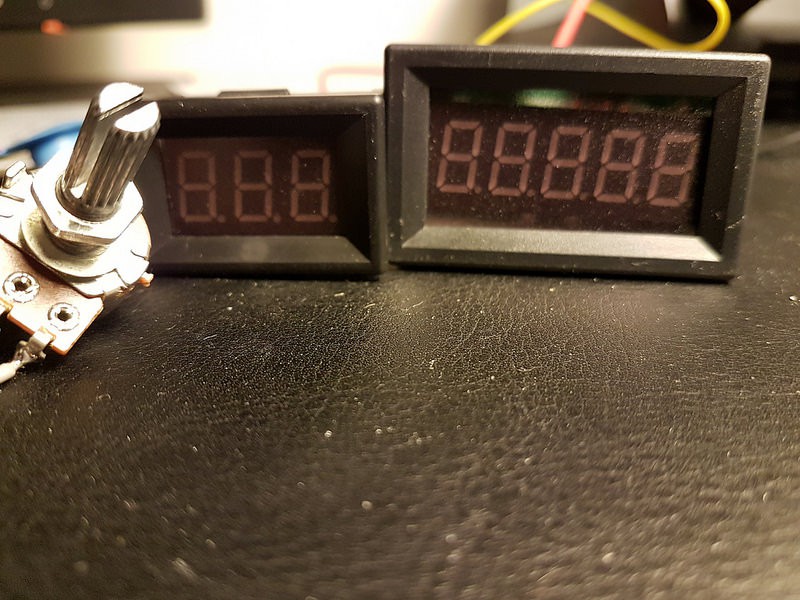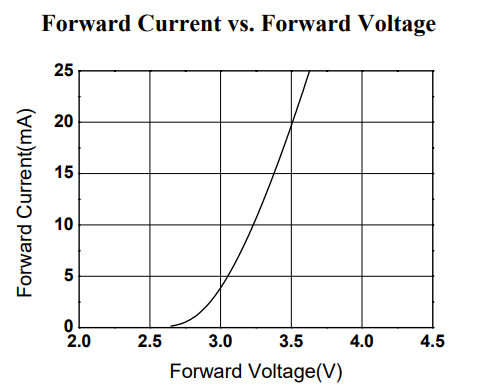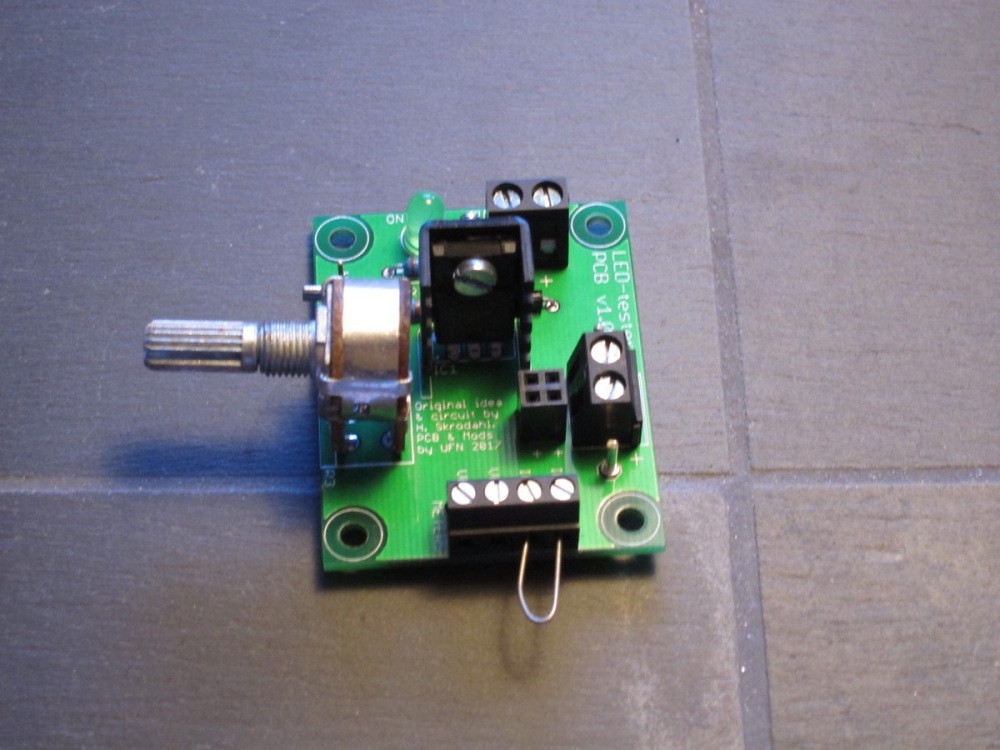Meters
A voltmeter and ammeter should give all the necessary information about my "LUT" (LED Under Test):

- The ammeter in series with the LED will give you the required current (If)for your selected brightness.
- The voltmeter in parallel with the LED will give you the forward voltage drop (Vf) at that current level.
Then, knowing the voltage of your circuit (Vc) will give you the following formula for deciding your resistor value (R):
R = (Vc - Vf) / If
Recap
Just a short recap on how an LED works before I continue. LED brightness is not controlled by how much voltage you feed it with, rather by how much current is running through it. To get the brightness you want, you adjust the current with a current limiting resistor according to Ohm's law (R = U / I)
The voltage (U) is the difference between your circuit voltage and the voltage drop in the LED. The current (I) is the current needed for the brightness you want. The voltage drop is (almost) always stated as a single voltage. Knowing the current, your circuit voltage and the voltage drop, you can use a calculator to find the resistor value.
So, know what voltage your circuit runs on, know the brightness you want, and find the LED's voltage drop and stuff it in a calculator (or use the formula above). Not too much work, right? Turns out I've been wrong for all these years.
Learning about LEDs
I noticed that the forward voltage drop decreased at lower currents, so I got to read my very first LED datasheet. Here's a graph from a random LED datasheet that confirms what I saw:

On one of my cheap Chinese LED's had a variation in forward voltage drop from 1.6 to 2.6 volts. The result at lower brightness (i.e. lower current) is:
- The voltage across the current limiting resistor is higher...
- ...which means that the circuit's current is higher.
- Higher current means more brightness.
There's the explanation for why I always need higher value resistors than I expect at lower brightness.
This really made this LED Tester more useful, as it turns out that the formula for selecting the correct resistor value is really more of a guesstimate. (You can of course get it right by buying more expensive LEDs and getting the correct datasheet. Still, there's no substitution for actually seeing the brightness.)
LED Tester, Deluxe version
Blogger theslowdiyer in Denmark has made a deluxe version of this LED Tester, complete with drawings:
https://theslowdiyer.wordpress.com/2017/03/22/led-tester-deluxe/

(Picture courtesy of https://theslowdiyer.wordpress.com)
Discussions
Become a Hackaday.io Member
Create an account to leave a comment. Already have an account? Log In.
Thanks for the comment @MarkRD. While I actually do have a formal EE education, it's more than 20 years since I graduated and I haven't worked in the EE field (only tangential).
I'd say that my LED Tester does the work in taking any guesstimates out of the equation.
The forward voltage is only a function of the forward current. That way I get the correct forward voltage drop at the current/brightness I want, and I can get the required brightness in my circuit of choice. After all, getting the brightness right is really all I care about.
EDIT:
I did make one mistake in the text though. I wrote that at lower current, "The voltage across the LED is higher". It's of course lower. The voltage across the current limiting resistor is higher, which will give a higher than anticipated current in the circuit.
Are you sure? yes | no
"as it turns out that the formula for selecting the correct resistor value is really more of a guesstimate."
This is the downside of learning things piece-meal on your own instead of getting formal education. Stuff that's routine and obvious to graduate/professional is a major discovery to an amateur.
As you have discovered, a "constant voltage load" is only the most crude approximation for the characteristic of an LED. It works well enough only if you don't care that much about the exact voltage or current you're getting, you just want it in the ballpark.
Next best is a constant voltage load in series with a resistor. Eyeballing your datasheet, it could be reasonably well modeled as a 2.7V load in series with a 25 ohm resistor.
Though obviously even that is not perfect, since your graph is a curve and not straight lines. The best (and most complicated) model of a diode is the diode equation, which is much less convenient to work with than the simple models.
There are probably many things you were taught that aren't really as simple as you think. Things that are simple when you use them in typical circumstances can become incredibly complicated when you push their boundaries.
Are you sure? yes | no